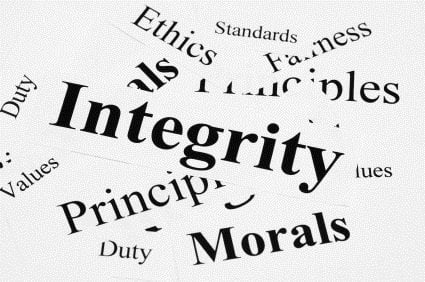
We are just two weeks out from the American Society of Training and Development (ASTD) International Conference and Expo. Fierce is very excited this year to be both exhibiting and presenting at the conference.
One of the tracks that will be explored during the conference is organizational effectiveness. There is a lot of research out there that explores what makes an organization more effective. One of the ways that I find most compelling, is when a company and its employees share the same core values.
In April, I read an online article in Chief Learning Officer magazine about a nationwide telephone survey that CO2 Partners, a Minnesota leadership development firm, did about employee’s attitude toward their core values and how they aligned with their organizations.
One third (30%) of people surveyed said that the values of their companies are not always consistent with their own. That’s a pretty substantial number of people who feel some sort of ethical resistance to what they are supposed to be supporting day in and day out.
It’s not enough to put a poster of your company’s core values on the wall, and leave it at that. The reality is that people have personal belief systems; and by asking your employees to largely dissociate themselves from what they believe in while they are at work is potentially separating them from being the most engaged and productive versions of who they are.
So how do you create a culture of core values that leads to a more effective organization? It starts with a Fierce Conversation. Fierce Conversations have four objectives that will help bridge the gap between an organization’s core values and that of their employees.
The first step is to interrogate reality. To begin to interrogate the reality of your culture, and learn what it is that is causing the ethical dilemma for your workers. Is one of your organization’s core values to give back to the community, and yet you provide no opportunities for the employees to invest time and resources into a social cause as a collective? Transformation can happen when these schisms are out in the open.
The second step is to provoke learning. Having a Fierce conversation about what people believe in may seem scary, but done in the right manner you can open your organization up to creating an atmosphere where people are truly invested in each other.
Third, tackle tough challenges. The old saying “no risk, no reward” has some truth to it. If you do the bare minimum to invest in your employees, they will return the favor, and do the bare minimum in working hard for you. People want meaning out of their careers, and providing them the opportunity to work somewhere they believe in might have challenges, but can pay off in spades.
Last, enrich relationships. Enriching relationship happens when the truth is learned and a new common ground is decided. Input allows your employees to feel that they are reflected in your company’s standards, and encourages an engaged workforce. A culture that is effective and engaged supports your leaders, and allows them to lead to their full potential.
Tags: #Cultural Change, #Inadequate Training, #Unrealistic Goals, #Work Relationships





